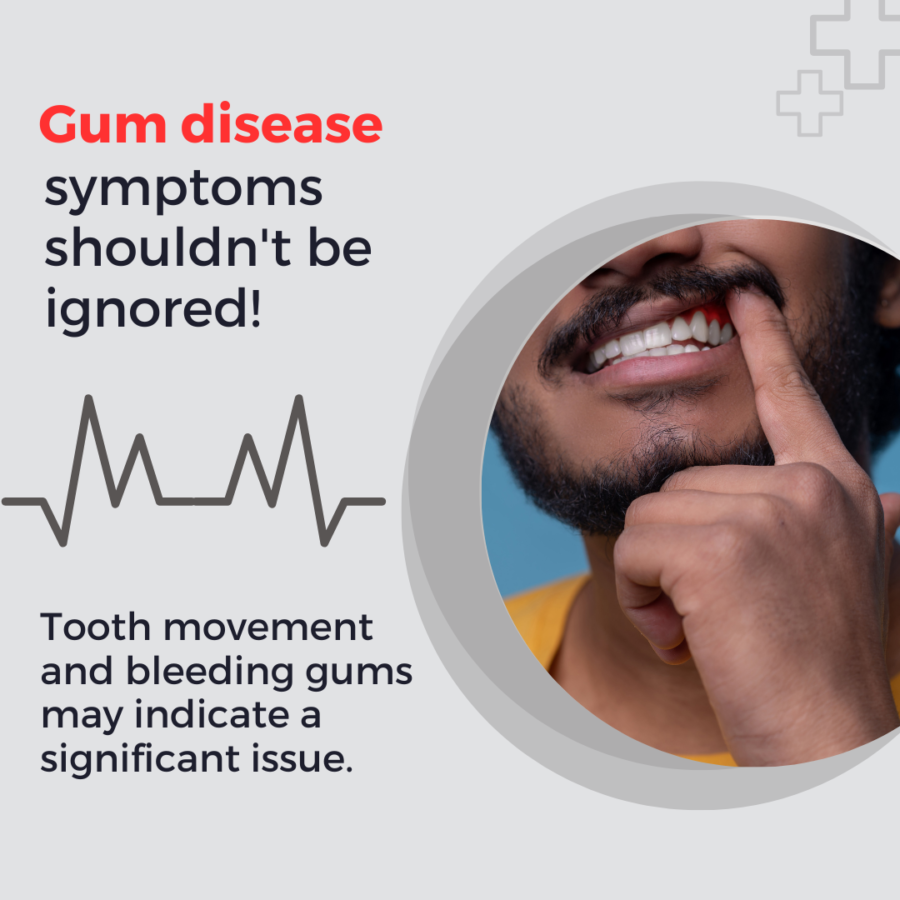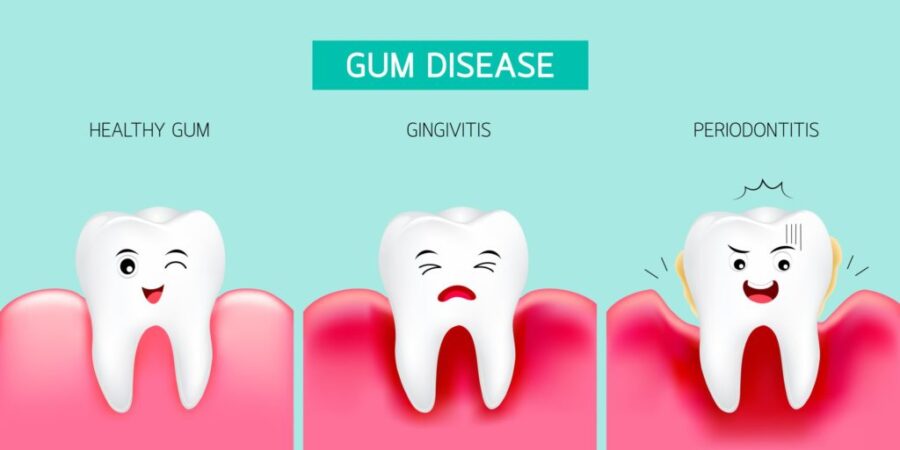A new approach known as “Laser Treatment for Gum Disease” has surfaced recently, offering a less invasive and more effective cure. This cutting-edge process deviates from conventional techniques and demonstrates its ability to produce excellent outcomes with less discomfort. In this blog post, we will examine the advantages of laser treatment for gum disease, the science underlying it, and the reasons it is becoming more and more popular among oral health aficionados. So take a seat back, unwind, and join us as we explore the cutting edge of gum care and how it will integrate with the finer points of your oral health.
What is Gum Disease?
Periodontal disease, another name for gum disease, is a common illness that affects the tissues that surround teeth. Although it first affects the gums, if ignored, it may spread to the bones that support the teeth. Gum disease primarily comes in two forms:
Gingivitis: the early stage, marked by gingival irritation. With good oral hygiene habits and expert dental care, gingivitis is frequently reversible.
Periodontitis: Gingivitis can progress to periodontitis, which is an inflammation that affects the tissues that support the teeth. Pockets between the teeth and gums may form as a result, perhaps resulting in tooth loss.
Causes and Risk Factors
- Poor Oral Hygiene: Inadequate brushing and flossing can allow plaque to build up, contributing to gum disease.
- Tobacco Use: Smoking or chewing tobacco increases the risk of gum disease and can hinder the success of treatment.
- Genetics: Some individuals may be genetically predisposed to gum disease, making regular dental check-ups even more important.
- Medical Conditions: Diseases like diabetes and autoimmune disorders can increase the risk of gum disease.
- Hormonal Changes: Hormonal fluctuations, such as those during pregnancy, menstruation, and menopause, can make gums more susceptible to inflammation.

Common Symptoms and Signs
- Bleeding Gums: Gums that bleed during brushing or flossing may indicate inflammation.
- Swollen or Red Gums: Inflammation can cause changes in the color and texture of the gums.
- Bad Breath (Halitosis): Persistent bad breath that doesn’t improve with oral hygiene may be a sign of gum disease.
- Receding Gums: The gums pulling away from the teeth, creating a longer appearance, can be indicative of gum problems.
- Sensitive Teeth: Increased sensitivity to hot or cold temperatures may signal gum recession and exposure of tooth roots.
- Painful Chewing: Discomfort or pain while chewing may suggest advanced stages of gum disease affecting the supporting structures of the teeth.
How do Laser Treatments work?
Explaining the Technology Behind Laser Therapy
With the use of cutting-edge technology, laser treatment for gum disease targets and eliminates damaged or infected tissue by concentrating light. There are two main types of lasers used in dentistry: hard tissue lasers and soft tissue lasers.
Soft Tissue Lasers: These lasers are specifically designed for procedures involving the gums. They work by emitting a wavelength of light that is highly absorbed by water and hemoglobin, making them ideal for precise and controlled removal of diseased gum tissue.

Hard Tissue Lasers: While not as common for gum disease, hard tissue lasers are used for procedures involving teeth and bones. They are effective for reshaping teeth, removing small amounts of tooth structure, and preparing teeth for dental fillings.
Step-by-Step Process During a Laser Gum Treatment
Diagnostic Phase: Dr. Chirag Chamria conducts a thorough examination of the patient’s oral health, including assessing the extent of gum disease. Advanced diagnostic tools may be used to precisely identify the affected areas.
Local Anesthesia (if necessary): Depending on the severity of the case, Dr. Chamira may administer local anesthesia to ensure the patient’s comfort during the procedure.
Application of Laser: He directs the laser beam precisely at the targeted areas of diseased gum tissue. The laser energy is absorbed by the water and pigments in the tissue, effectively vaporizing or removing the affected tissue.
Bacterial Removal: The laser’s energy also has a bactericidal effect, helping to eliminate bacteria present in the treated areas.
Stimulating Healing: As the laser removes the diseased tissue, it also stimulates the surrounding healthy tissue to promote healing and regeneration.
Closure of Treatment Area: If necessary, Dr. Chamira may use the laser to create blood clotting or seal blood vessels, reducing bleeding and promoting a faster recovery.
Post-Treatment Care: The patient receives post-treatment care instructions, which may include recommendations for oral hygiene, follow-up appointments, and any prescribed medications.
Laser Treatment vs. Traditional Method
| Laser Treatment | Laser Treatment | |
|---|---|---|
| Precision | Because laser treatment is so exact, sick tissue can be removed specifically without damaging healthy tissue. | More intrusive, manual tissue removal is involved in traditional techniques like scaling and root planing, which may also cause more discomfort. |
| Bleeding | By coagulating blood vessels, laser therapy reduces bleeding both during and after the procedure. | Because traditional methods include physical tissue removal, there may be more bleeding. |
| Effectiveness | Laser treatment has proven highly successful in targeting and eliminating damaged tissue. Because it is minimally invasive, patients frequently recover more quickly. | Although they may need several sessions and longer recuperation times, traditional approaches have been shown to be effective. |
| Patient Comfort | Patients frequently express decreased pain both during and following laser therapy. | Traditional methods might cause discomfort to patients both during and after. |
Advantages of Laser Treatment for Gum Disease
Precision: Laser treatment allows for highly precise targeting of diseased tissue, minimizing impact on healthy surrounding areas.
Minimally Invasive: The procedure is minimally invasive, reducing discomfort and promoting faster recovery compared to traditional methods.
Reduced Bleeding: The laser’s coagulative properties minimize bleeding during and after the procedure, enhancing patient comfort.
Bactericidal Effect: Laser treatment not only removes tissue but also has a bactericidal effect, aiding in the elimination of harmful bacteria.

Effectiveness: Laser treatment has shown high efficacy in targeting and removing diseased tissue, promoting better healing outcomes.
Faster Recovery: Patients often experience quicker recovery times due to the minimally invasive nature of laser treatment.
Reduced Discomfort: Laser treatment is associated with less discomfort during and after the procedure, contributing to a more positive patient experience.
Stimulates Healing: The laser stimulates the surrounding healthy tissue, promoting regeneration and a more robust healing process.
Personalized Treatment Plans: Dentists can tailor laser treatment plans to individual patient needs, ensuring a more customized approach.
Reduced Follow-up Visits: Precision in laser treatment may lead to fewer follow-up visits, potentially reducing overall treatment costs.
Conclusion
To sum up, laser treatment for gum disease is a cutting-edge choice that offers accuracy, less invasiveness, and a quicker recovery. Selecting laser treatment is a step toward effective and efficient care, with reduced discomfort, customized programs, and the promise of a better future for oral health. Investigating this cutting-edge choice is essential for individuals looking for sophisticated options. Make an appointment with Dr. Chirag Chamria so you can discuss the advantages of a customized laser treatment. Accept the future of dental health and get in touch with us at [Contact Information] right now. A healthy grin is what’s in store.
All rights reserved by Royal Dental Implants Pvt Ltd., issued in public interest





